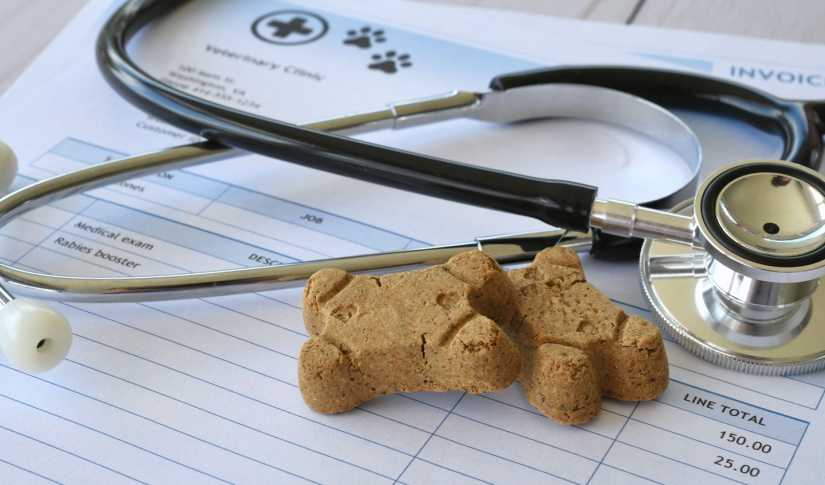7 Ways Automated Veterinary Billing Can Save Your Practice Thousands

In a traditional veterinary workflow, team members manually update medical records, build invoices line by line, print statements and receipts, and process payments using credit card terminals that require manual data entry. Multiplied by hundreds or thousands of clients and visits each month, this billing system quickly becomes time-consuming, error-prone, and potentially costly.
Automated veterinary billing can help address some of these issues by providing time savings, reducing headaches, and improving overall financial health. Here are seven ways an automated billing system can save your veterinary practice thousands in direct cost savings and reclaim hours lost to tedious, manual tasks.
1. Fewer lost charges and missed payments
Manual billing relies on busy veterinary team members to remember and enter every service performed during a visit. However, we’re all human, and it’s easy to miss something when juggling multiple patients, pet owners, appointments, surgeries, and treatments during a typical day.
Automated veterinary billing captures charges in real-time and integrates with your practice management system or appointment scheduling platform for a smooth client and veterinary team experience. Charges are transferred to the invoice automatically to ensure nothing gets missed, and fewer billing errors translate to more consistent cash flow for the business.
2. Streamlined workflows and less administrative burden
How much time does your front desk staff spend creating or auditing invoices, processing payments, handling statements and outstanding balances, managing payment plans, and transferring data from one program to another? Automated veterinary billing and general automation prevent losses related to overtime and allow teams to function at their optimal potential, ensuring payroll dollars have a better return on investment.
Using cloud-based veterinary practice management software with built-in billing functionalities can help teams:
- Eliminate redundant data entry
- Reduce time spent on follow-ups
- Manage recurring payments for wellness and payment plans
- Automate financial reports for at-a-glance insights
3. Hassle-free flexibility
Modern pet owners want flexibility to help them pay for their pet’s veterinary care. Automated veterinary billing systems support other key PIMS features that help veterinary teams meet the growing expectations and financial needs of their clients, preventing lost cash flow from client turnover or attrition.
Alongside the convenience and accuracy of automation, PIMS systems with automated billing can also provide:
- Online payment portals
- Contactless payments
- Payment plans or subscriptions
- Multiple payment methods (e.g., credit card, ACH, mobile pay)
- Integrated payment processing
4. Improved financial data accuracy for better decision-making
Manual billing makes tracking trends and metrics in your financial data more difficult, especially when data is scattered across disparate spreadsheets or software. Automated systems can better aggregate financial data without errors, leading to improved organization and ultimately, better decisions about the practice’s future. Additionally, more complete and accurate billing data means that pulling and understanding critical financial reports becomes easier as well.
5. Fewer errors and better data security
Errors in billing are costly, and they can damage your reputation with clients. Automation and automated veterinary billing reduce data entry errors, missed charges, and incomplete patient records by synchronizing billing with medical records and patient treatments. Modern practice management systems can build and send invoices after your client agrees to a plan or signs an estimate.
Additionally, modern billing platforms and PIMS systems are built with data security in mind. Look for features like encryption, tokenization, and password security to help protect sensitive client, clinic, and payment information. Secure systems are critical for limiting your risk for security breaches like ransomware attacks, which can cost the hospital considerably.
6. Support for your team’s well-being and retention
Most veterinary team members are not accountants, nor do they aspire to be. However, the administrative burden of account management and veterinary billing often falls on leadership, front desk teams, or other professional staff, and can become an ongoing stressor that limits job satisfaction.
Automated veterinary billing can give team members more time back in their day to care for animals, build relationships with clients, and enjoy a better work-life balance. Happy, satisfied employees tend to stay in their positions longer, which reduces the hospital's costs associated with hiring and onboarding new staff.
7. Preparation for the future
The veterinary industry has seen an increase in demand for digital services, growing client communication expectations, and a shift toward automation across all areas of care. Practices that embrace automated veterinary billing position themselves to meet these demands and thrive.
Automated veterinary billing provides cost savings by protecting and maximizing revenue, ensuring team members operate efficiently, providing better job satisfaction, and preventing costly errors. Agile veterinary clinics that adapt to rising prices and a more consumer-focused healthcare landscape are likely to succeed in 2026 and beyond.



